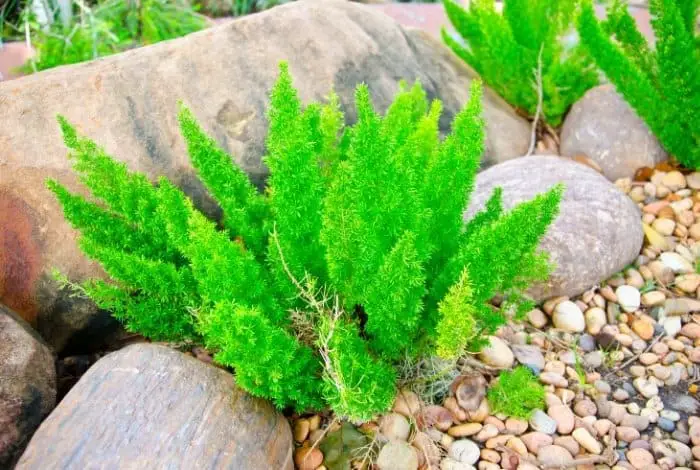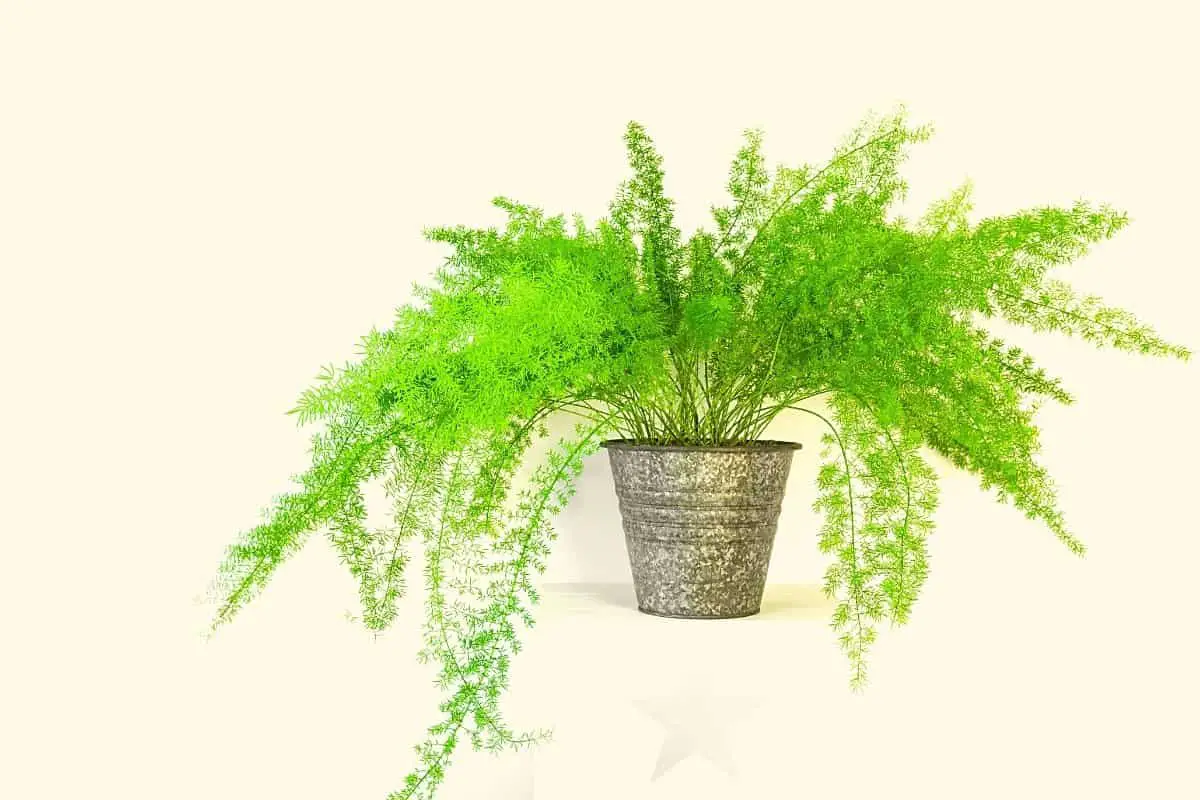Last Updated on January 17, 2023 by Urska
Full information on Asparagus fern indoor plant care is all you need to grow this amazing plant that is not a common houseplant. Though not a common houseplant, the feathery, light foliage makes it quite attractive. And the best of all can be grown indoors. In warmer areas, Asparagus fern can be grown outdoors as well. Growing it outdoors presents the disadvantage of allowing it to grow like a creeper and become invasive.
How to Identify Asparagus Fern Plant
Asparagus fern leaves are identified as tiny branchlets called cladophylls. They are flat and look like actual leaves. Mature asparagus fern plants become woody and develop sharp spines on the branches.
Fern plants thrive to become medium green cascading foliage that grows fast to fill the pot. Mature ferns that are thriving produce small berries and flowers. These berries can be used to propagate new fern plants.

The Asparagus fern is a fairly trouble-free plant that grows with ease both indoors and outdoors. It suffers the same pest and disease problems as many other indoor plants. Insecticidal soap is effective enough to help fight against mites and aphids.
Read more about How To Get Rid Of Aphids- Best Natural Methods
Asparagus Fern Indoor Plant Care Conditions
If you live in planting zones of 9 or above, you can easily grow your asparagus fern outdoors. In all other zones, it is grown indoors as a houseplant.
Asparagus fern indoor plant care takes a little more effort. There are important conditions that are a must for it to thrive. They include:
Sunlight, Temperature, and Humidity
- Light – This plant thrives in a good light when planted indoors. Keep it out of direct bright sunlight but give it plenty of light and it will thrive. Keep it next to a window that allows light in more than direct sun.
- Temperature and Humidity. It is necessary to have enough temperature (around 70 degrees, not below 55 degrees). This is the right environment in the indoor area that you want to grow the asparagus fern. Due to winter weather, the indoors are usually dry. Mist the plant daily to provide enough humidity for the plant. If you have a greenhouse or a shady porch house, the indoor plant will likely respond well to abundant growth in summer.

Soil, Water, Fertilizer for Asparagus Fern Indoor Plant Care
- Soil – Use loose well-drained soil when planting your fern in pots or containers. Asparagus fern tolerates slightly acidic soil conditions.
- Adequate water – Keep the fern well watered in all seasons. Keeping it well hydrated takes a little effort. As we have seen above, this plant thrives on humidity and the indoor climate can often be dry. It may dry out to the point that it appears dead, but outdoor spring temperatures and misting daily will revive it. Make it a habit to mist the plant daily especially the arching stems.
- Fertilizer – for your asparagus fern to thrive, it will need some fertilizer. Feed it with liquid or water-soluble all-purpose plant food. You can dilute it to ½ strength so that it does not overpower the plant. During summer, the plant may need weekly or monthly feedings.
- Repotting – They don’t mind being pot bound and can grow for 2 years without repotting. For successful repotting, divide the plants into big clumps and remove the underground roots when dividing. Place the divided plants into good-sized pots in order to retain their tight growth habit. This fern type does not need large pots as they are slow growers.
- Prune out the Dead Stems. Asparagus fern grows wildly if allowed to. To maintain it, you will need to prune out dead stems. Always wear gardening gloves when pruning mature plants to avoid injury.
- Toxicity Info – Asparagus fern has a high toxicity level in its red berries. If you eat these berries, they can cause digestive problems, so avoid them at all cost
Conclusion
This plant is a darling because of its fluffiness. Its texture is quite different compared to other plants yet is easy to grow. It does not demand a lot of attention, once you learn its maintenance cycle, you are good to go for a long time. You have every reason to grow your own Asparagus fern indoor!
Caroline is a gardener who loves to get down to the nitty–gritty of gardening. She proudly proclaims herself as a ‘dirt worshipper‘ and can often be found deep in the garden, covered in soil and singing to her plants. As a self–proclaimed ‘plant whisperer‘, Caroline believes that plants need love and attention just like any other living thing, and she loves to give them both. When she‘s not tending to her garden, you can often find her researching the latest gardening trends, or teaching others how to make their gardens thrive


